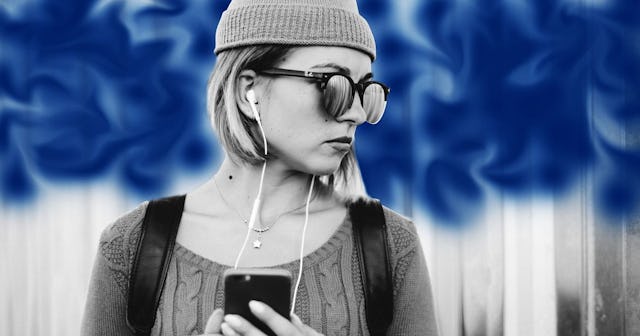I Learned About My Teen's Mental Illness By Looking Through Their Phone

Trigger warning: mental illness, suicide
I sat scrolling through my college student’s phone—with their permission—stunned by what I was reading. Sam was spending thousands of hard-earned dollars buying food and drinks for friends. Photos showed Sam partying at all hours of the day, sometimes during class time. Often, Sam sent nonsensical texts to multiple people throughout the night. Some apps revealed risky sexual behaviors. Social media posts demonstrated Sam was making up conflicts that didn’t actually exist and relaying unbelievable stories as if they were true. And right there, in with all the other bizarre social media posts that had been hidden from us, were ones where Sam threatened suicide.
As I scrolled, Sam lay sleeping in a hospital bed, recovering from their first suicide attempt. It had been a violent one and they would be hospitalized for several weeks. In the end, Sam would leave in-patient care with a diagnosis of bipolar disorder, likely catalyzed by stress, lack of sleep, and substance abuse. They would not be able to return to school for a long time.
I don’t blame their diagnosis on all those friends who pushed Sam to buy everyone dinner or skip classes to party. I do, however, wonder why none of those so-called friends thought to encourage Sam to seek help or even enlist help themselves from either a professional at the school or from us. And I would like to express to them how what they considered normal components of a college relationship were, in fact, signs of unhealthy interactions, often predicated upon them taking advantage of Sam’s mental illness.
Behaviors like those mentioned above are not normal for college students, no matter how wild we like to joke college is these days. The signs of mental illness were clear. When Sam entered college, they were shy, generally quiet, and hard-working. They never missed a class or assignment and often grew stressed if an assignment wasn’t completed at least a day before the deadline. They spoke generally well of family, and their social media was filled with family pictures and motivational quotes.
Through the behavioral changes and risky, erratic behaviors Sam demonstrated were clear signs that they were struggling with mental illness; either nobody noticed or nobody bothered to find out why Sam was acting strangely. These new behaviors made my child the life of the party, the wild new student who would provide a free meal and a good laugh, after all. Why try and change that?
Meanwhile, when we were together as a family and communicating via phone and text, we did notice the changes. We suggested Sam seek mental health care, possibly come home and let us support them through in-patient care. When they texted their friends about our requests, the responses ranged from “your parents are crazy” to “your parents don’t know you like we know you.” That’s right—people who had known Sam mere weeks were telling them they knew my child better than we did.
Jacob Wall/Reshot
The helpful mental health guide at the website College Stats reveals that a full 30% of college students believe their mental health struggles interfere with their education. 50% of students rate their mental health as sub-par and only 40% of students struggling with mental health issues seek help. Meanwhile, likely due to distance and normal separation, only 7% of parents claim their college students are struggling with a mental illness.
Parents, while we are helping our high schoolers prepare for the SATs and write the perfect college essay, it is vital that we also talk openly about mental health. We need to equip them to recognize the signs of mental illness in both themselves and others.
Major behavioral changes and inconsistencies—such as excessive spending or sleeping, erratic texting and social media use, changes in social and sexual behaviors, and frequent headaches or stomach aches can all point to various mental illnesses. Our teens need to know all the the signs.
According to the National Institute of Alcohol Abuse and Alcoholism, excessive drinking, especially during the first six weeks of college, is common—albeit particularly dangerous. Drinking instead of attending to other responsibilities, such as work and homework, is not. It can point to mental illness and/or addiction. Teenagers need to know this before they enter college.
Our teens need to understand that, according to College Stats, the third leading cause of death among people aged 14-24 is suicide and that one in every ten college-aged persons has made a solid plan for suicide. When I asked one of Sam’s friends why they didn’t seek professional or familial help for Sam after the social media posts about suicide, they told me they believed Sam’s untrue posts about family not being present and figured Sam’s friends could handle it. We need to teach our teens that they are not equipped to handle suicide threats and attempts. College students need professional help in the face of suicidal thoughts.
While a new college friend who is always ready to party and whose erratic behavior is entertaining and leads to free meals might seem exceptionally fun to your college student, there is enough of a chance that their new friend, like Sam, is struggling with the onset of a mental illness, and your teen should be prepared. They should recognize the signs that a new friend needs professional and, often, familial help. They should know how their particular school handles mental illness (most have a plan in place). They should know what to do if their friend threatens suicide or shows signs of suicidal ideation. And they should know these things before they head off to college themselves.
This article was originally published on